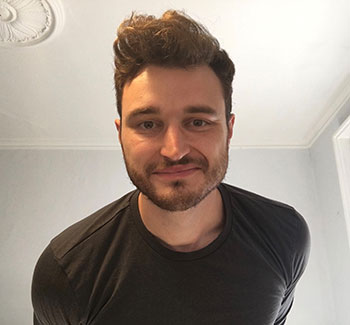Meet the Sir Howard Dalton Young Microbiologist of the Year finalists: James Horton
Posted on September 6, 2021 by Microbiology Society
The Sir Howard Dalton Young Microbiologist of the Year Prize is awarded by the Society each year. The prize recognises and rewards excellence in science communication by a Microbiology Society member who is a postgraduate student or postdoctoral researcher, having gained their PhD in the last two years. In the run-up to the event, we will be getting to know the finalists. In this blog, we meet James Horton, a postdoctoral research fellow from the University of Bath, UK.
Finalists shortlisted from oral and poster presentations at Annual Conference Online 2021 will present their research to compete for the award at the Society Showcase and AGM on Thursday 16 September. They will be judged by a panel chaired by Professor Jose Bengoechea, co-Chair of the Sustainability Committee, and comprising representatives of the Society’s Divisions.
James Horton

Talk title: A mutational hotspot that determines highly repeatable evolution can be built and broken by silent genetic changes
Research Interests: Can we predict the evolution of bacteria? One major barrier to making accurate predictions is the event of mutation, which is often considered to be inherently unpredictable. My work is dedicated to elucidating the mechanisms that bias mutation, allowing for predictable evolutionary outcomes from the chance event that is mutation.
Theme of talk: Bacteria sometimes evolve in a remarkably repeatable manner: When challenged by the same environment, independent populations of bacteria can utilise identical mutations to recover. However, the ability to evolve predictably is not often shared by a bacterial strain’s close relatives. The bacterial relatives, known as homologs, often harbour many synonymous differences in their DNA. This means that the DNA sequence itself is different, but the encoded protein product remains the same. As such these changes are referred to as “silent”. My work reveals that far from being silent bystanders, these synonymous differences in DNA can determine the repeatability of evolution.
If I was not a microbiologist, I would be… A columnist. Before starting my PhD I worked as a science writer, which allowed me to explore one of my core passions of science communication. As I thoroughly enjoy investing my personality into my work, I think I’d find authoring columns to be the most fulfilling form of writing.
Jame’s talk will take place during Society Showcase and AGM on 16 September, which is still open for registration. Visit the event page for short profiles of the finalists, and keep an eye on the blog to read more full profiles, which will continue to be published over the next few weeks.
Updates about the event will also be shared on our social media channels – follow us @MicrobioSoc on Twitter (using the hashtag #YoungMicro21), and on Facebook, Instagram and LinkedIn.

